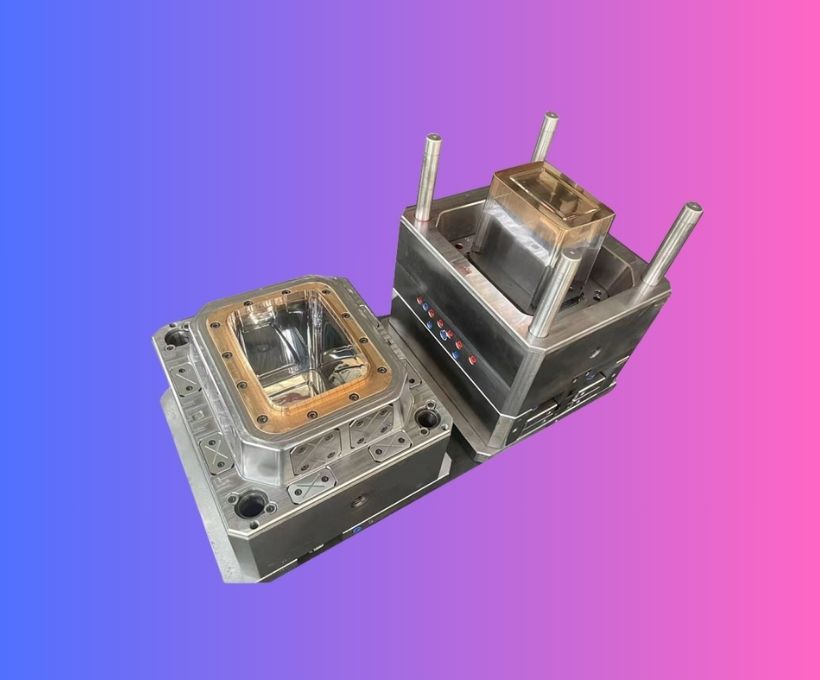Types of Injection Moulding
I. Introduction
A. Definition of Injection Moulding
B. Overview of Types of Injection Moulding
II. Types of Injection Moulding
A. Hot Runner Moulds
- Definition
- Advantages
- Disadvantages
B. Cold Runner Moulds
- Definition
- Advantages
- Disadvantages
C. Multi-Cavity Moulds
- Definition
- Advantages
- Disadvantages
D. Stack Moulds
- Definition
- Advantages
- Disadvantages
III. Conclusion
A. Summary of Types of Injection Moulding
A. Definition of Injection Moulding
Injection moulding is a manufacturing process for producing parts from both thermoplastic and thermosetting plastic materials. It is most commonly used in mass production processes where the same part is being created thousands or even millions of times in succession.
B. Overview of Types of Injection Moulding
Injection moulding is a highly versatile process that can be used to create a wide variety of parts and products. There are a few different types of injection moulding, each with its own advantages and disadvantages. This article will provide an overview of the different types of injection moulding, including hot runner moulds, cold runner moulds, multi-cavity moulds, and stack moulds.
II. Types of Injection Moulding
A. Hot Runner Moulds
- Definition
Hot runner moulds are injection moulds that use a heated manifold to inject the molten plastic into the mould. This type of mould is well-suited for high-volume production runs, as it eliminates the need to manually inject the plastic into the mould.
- Advantages
The primary advantage of hot runner moulds is that they are more efficient than cold runner moulds. This is because the plastic is already heated when it is injected into the mould, so there is no need to heat it up before injection. Additionally, hot runner moulds are less prone to warping and deformation due to the uniform temperature of the plastic when it is injected.
- Disadvantages
The primary disadvantage of hot runner moulds is that they are more expensive than cold runner moulds. Additionally, they require more maintenance and are more prone to wear and tear due to the higher temperatures.
B. Cold Runner Moulds
- Definition
Cold runner moulds are injection moulds that use a cold manifold to inject the molten plastic into the mould. This type of mould is well-suited for low-volume production runs, as it allows for manual injection of the plastic into the mould.
- Advantages
The primary advantage of cold runner moulds is that they are less expensive than hot runner moulds. Additionally, they require less maintenance and are less prone to wear and tear due to the lower temperatures.
- Disadvantages
The primary disadvantage of cold runner moulds is that they are less efficient than hot runner moulds. This is because the plastic must be heated before it is injected into the mould, which takes additional time and energy. Additionally, cold runner moulds are more prone to warping and deformation due to the uneven temperature of the plastic when it is injected.
C. Multi-Cavity Moulds
- Definition
Multi-cavity moulds are injection moulds that use multiple cavities to produce multiple parts at the same time. This type of mould is well-suited for high-volume production runs, as it allows for the production of multiple parts in a single cycle.
- Advantages
The primary advantage of multi-cavity moulds is that they are more efficient than single-cavity moulds. This is because multiple parts can be produced in a single cycle, which reduces the amount of time and energy required to produce each part. Additionally, multi-cavity moulds are less prone to warping and deformation due to the uniform temperature of the plastic when it is injected.
- Disadvantages
The primary disadvantage of multi-cavity moulds is that they are more expensive than single-cavity moulds. Additionally, they require more maintenance and are more prone to wear and tear due to the higher temperatures.
D. Stack Moulds
- Definition
Stack moulds are injection moulds that use multiple layers of moulds to produce multiple parts at the same time. This type of mould is well-suited for high-volume production runs, as it allows for the production of multiple parts in a single cycle.
- Advantages
The primary advantage of stack moulds is that they are more efficient than single-layer moulds. This is because multiple parts can be produced in a single cycle, which reduces the amount of time and energy required to produce each part. Additionally, stack moulds are less prone to warping and deformation due to the uniform temperature of the plastic when it is injected.
- Disadvantages
The primary disadvantage of stack moulds is that they are more expensive than single-layer moulds. Additionally, they require more maintenance and are more prone to wear and tear due to the higher temperatures.
III. Conclusion
A. Summary of Types of Injection Moulding
Injection moulding is a highly versatile process that can be used to create a wide variety of parts and products. There are a few different types of injection moulding, including hot runner moulds, cold runner moulds, multi-cavity moulds, and stack moulds. Each type of mould has its own advantages and disadvantages, and should be chosen based on the specific requirements of the application.
